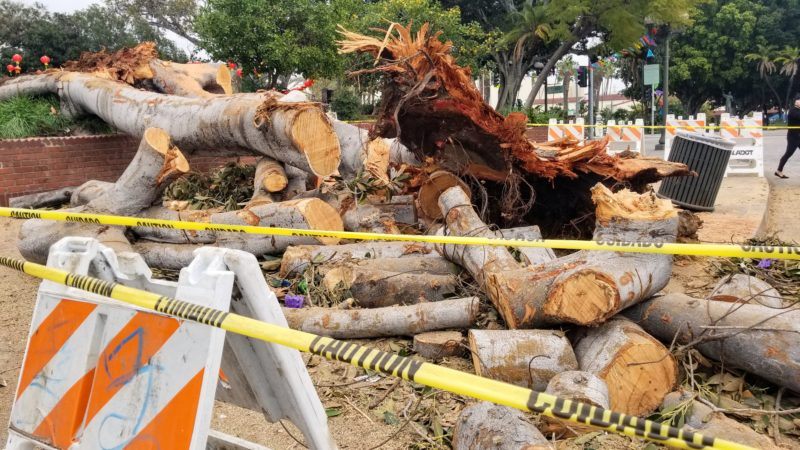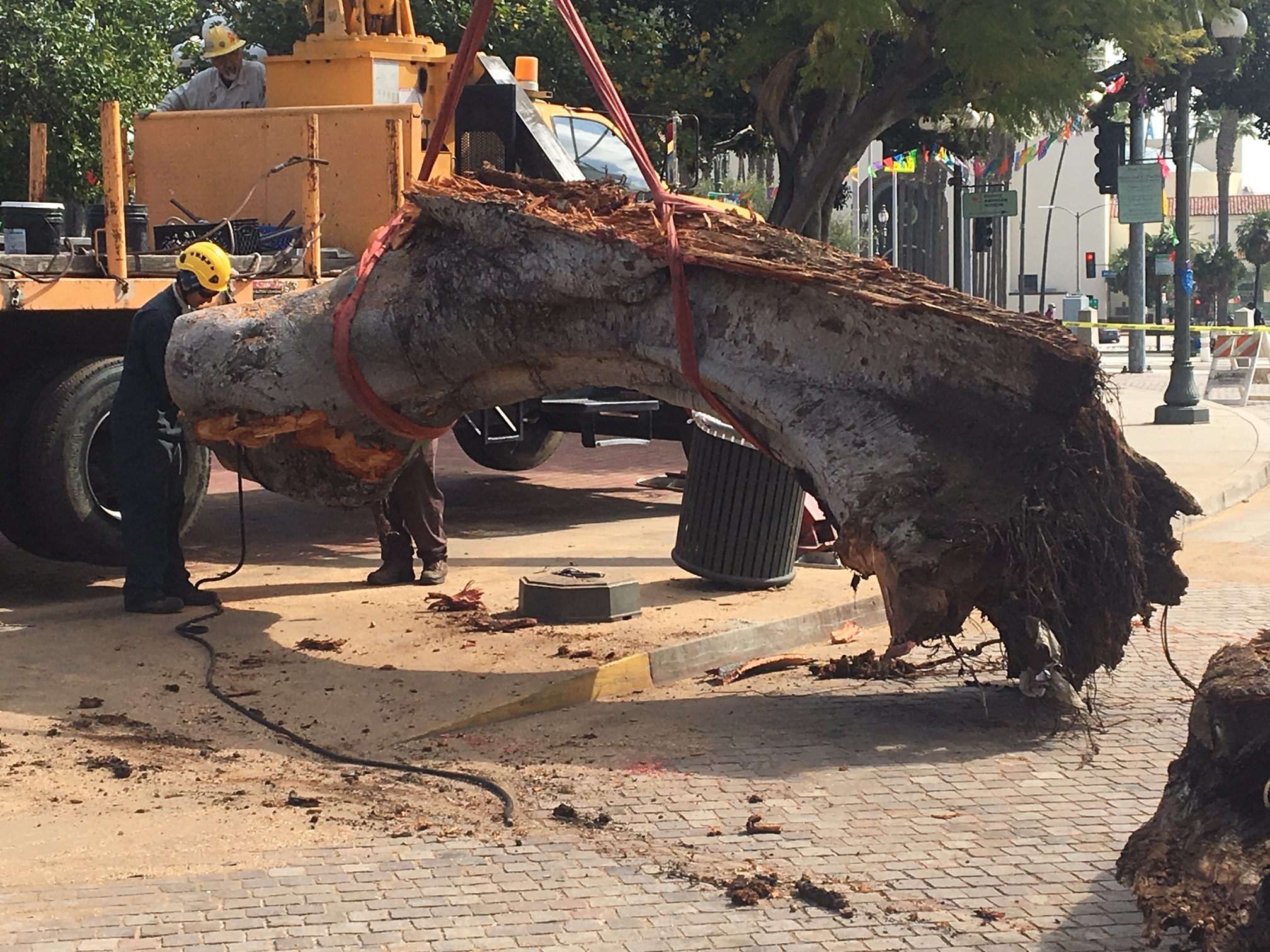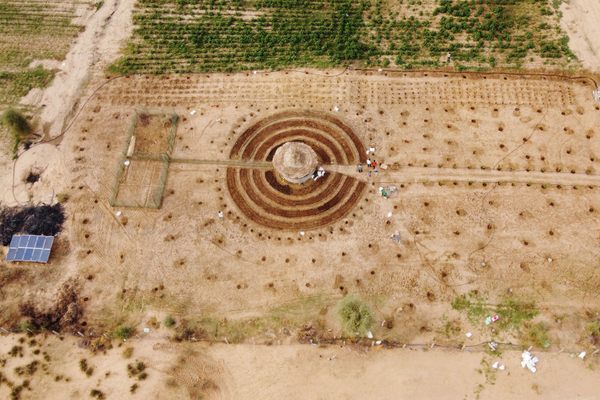The Life of a Historic Los Angeles Tree Comes to an End
For 144 years, it lived at El Pueblo de Los Angeles, the site where the city was founded in the 18th century.

Since 1875, the four Moreton Bay fig trees at El Pueblo de Los Angeles—the site where the Spanish pueblo that became Los Angeles was founded in the 18th century—have been providing residents of the California city with shade and horticultural beauty.
Planted by Elijah Hook Workman after arriving from Australia 144 years ago, the trees were initially part of a project to beautify the plaza, reported KCET. In addition, the Los Angeles Times notes that planting the trees helped foster the 19th-century narrative that anything could grow in the agricultural oasis of Southern California.

And for almost a century and a half, the four trees endured, until March 2, 2019. During a Chinese lantern festival in the plaza, guests heard the thundering snap of one of the trees careening to the ground. The once magnificent tree was now making a slow descent to the earth, with Chinese lanterns dangling from its branches.
The trees aren’t in the best of locations. The botanist Frank McDonough told the Los Angeles Times that Moreton Bay figs can become unhealthy when surrounded by concrete, as this one was, because fallen leaves are not able to decompose, enriching the surrounding soil in the process.
After its decline, the monumental fig tree was sawed into pieces and hauled away from its roots. All that remains is an empty plot and soft soil where the fig once stood. The city hasn’t decided what to plant as its replacement, but it has been open to community suggestions about the horticultural future of El Pueblo de Los Angeles.













Follow us on Twitter to get the latest on the world's hidden wonders.
Like us on Facebook to get the latest on the world's hidden wonders.
Follow us on Twitter Like us on Facebook